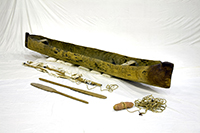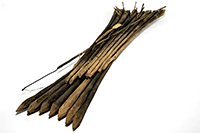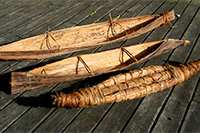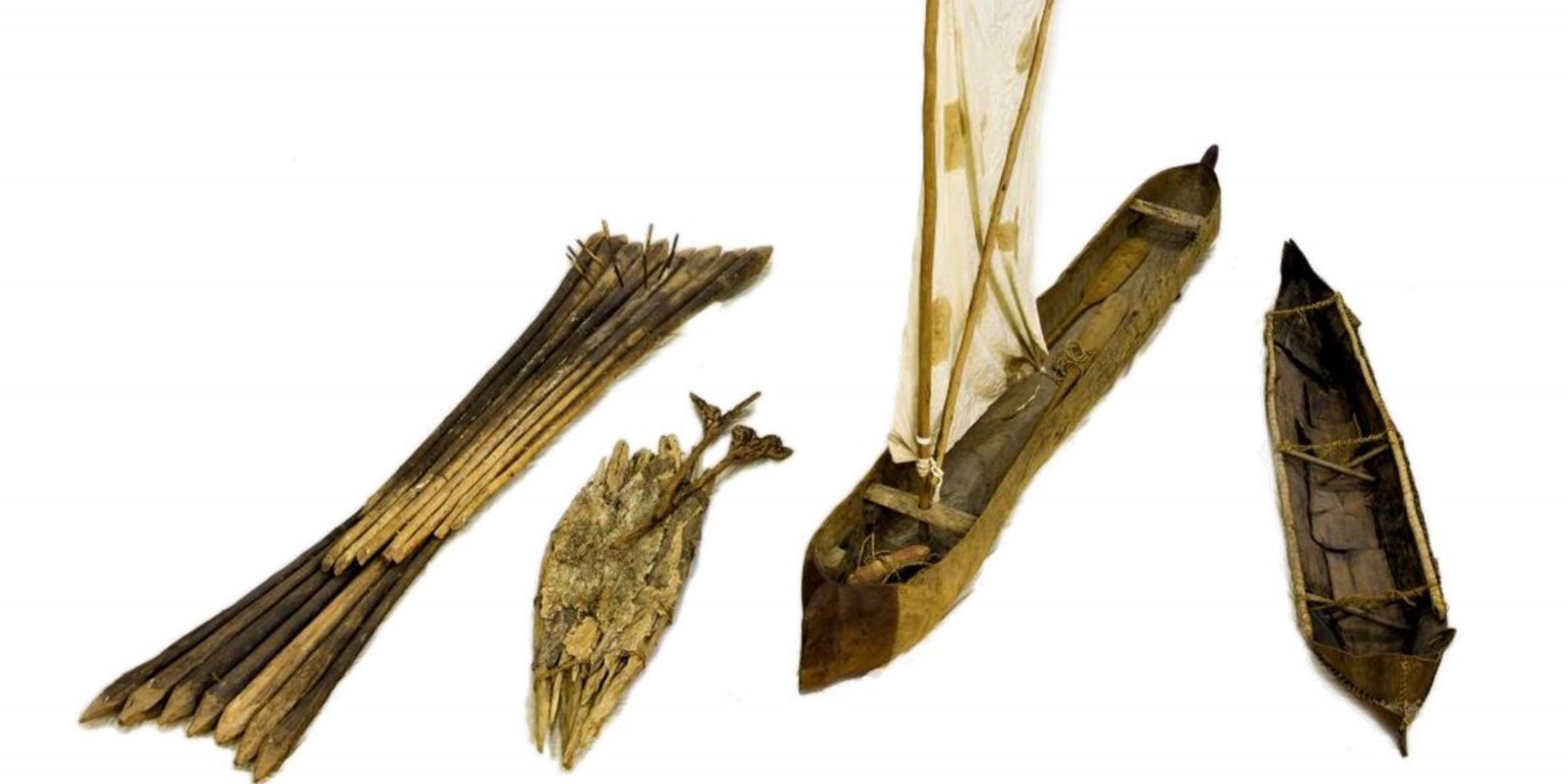
Acknowledgement of Country
The home of the Australian National Maritime Museum is on the waters of Sydney Harbour, and the museum acknowledges the Gadigal people who are the traditional custodians of the land and waters of its site at Tumbalong, or Darling Harbour. The museum also acknowledges all traditional custodians of the lands and waters throughout Australia, and pays its respects to them and their cultures and to elders both past and present.
Cultural Warning
Warning: People of Aboriginal and Torres Strait Islander descent should be aware that Signals Magazine may contain names, images, video, voices, objects and works of people who are deceased. Signals Magazine may also contain links to sites that may use content of Aboriginal and Torres Strait Island people now deceased.
Aboriginal canoes and rafts in our collection
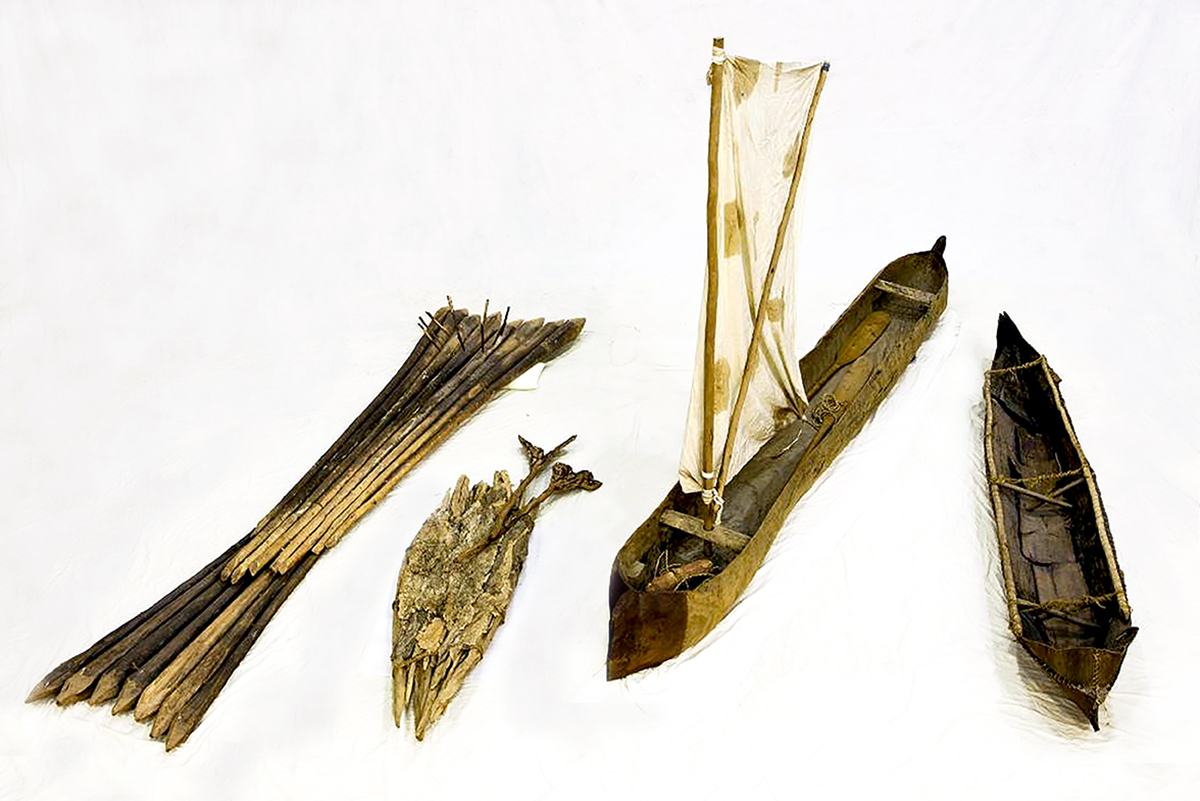 Four Aboriginal watercraft from the museum’s collection. Image: Andrew Frolows.
Four Aboriginal watercraft from the museum’s collection. Image: Andrew Frolows.
The museum’s extensive collection of Aboriginal and Torres Strait Islander artefacts and culture includes a diverse range of watercraft. These craft were all made relatively recently – and by building them, the makers and their communities have been able to maintain the knowledge, traditions and culture that have been handed down for countless generations, and ensure their preservation for the future.
The canoes and rafts tell their stories of construction and use, but they are also now appreciated for their striking and bold shapes that are driven by the choice of material and how it can be shaped and formed. It is a construction that reflects their builders’ strong culture, which is connected to a deep understanding of the environment and the materials available. Engineered to perfectly suit their needs, they form a strong and reliable structure – and designing a boat is a complex task, as a boat must satisfy many requirements to fulfil its purpose.
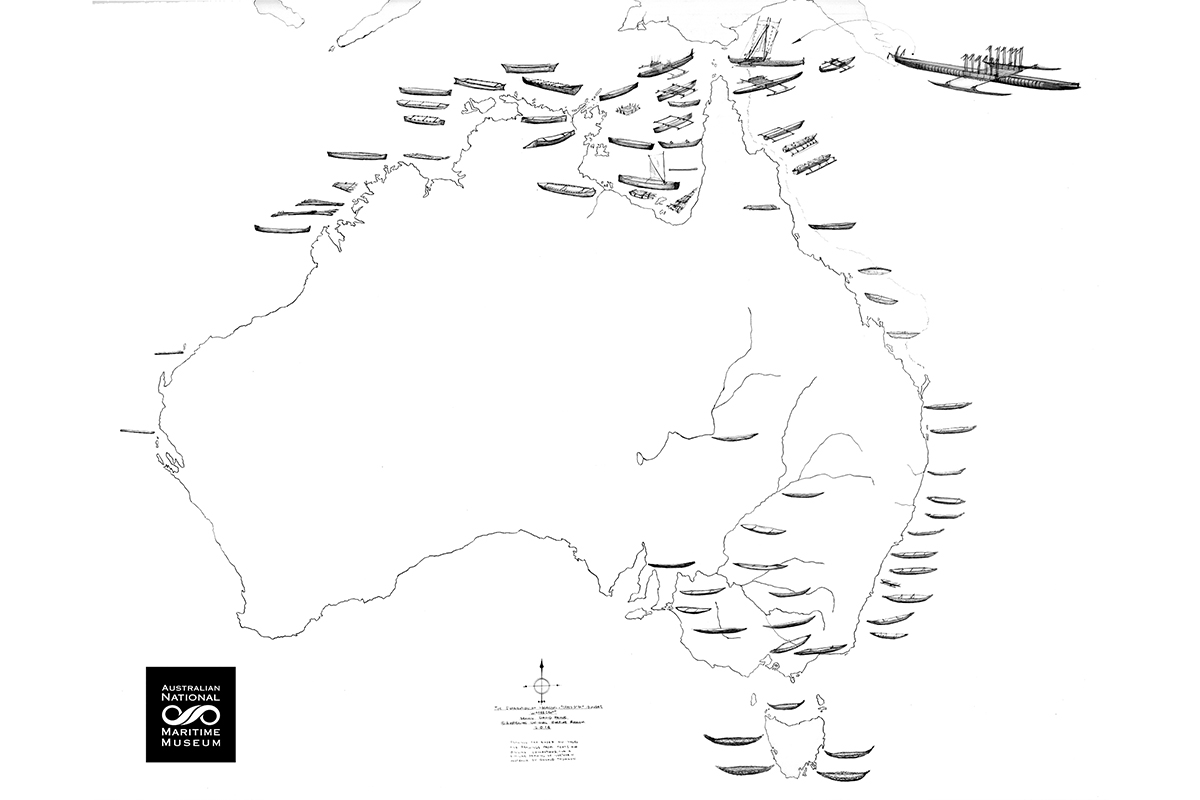 Distribution of Indigenous watercraft.
Image: David Payne, 2014.
Distribution of Indigenous watercraft.
Image: David Payne, 2014.
The following chapters tell some of the stories of the craft, their shape captured in images along with an illustration created to record the unique details associated with each one.
